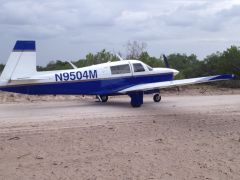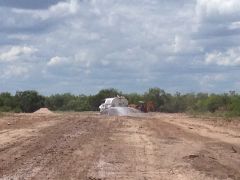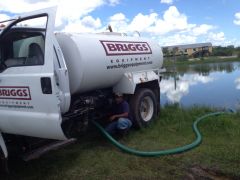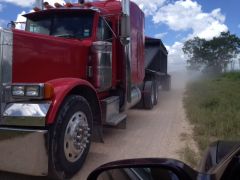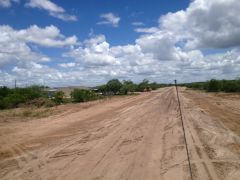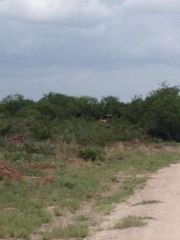-
Posts
475 -
Joined
-
Last visited
Content Type
Profiles
Forums
Blogs
Gallery
Downloads
Events
Store
Everything posted by garytex
-
Jim at plane covers above is a great to deal with and be builds a very very good cover. He uses Sunbrella material which is so by far and away the best.
-
I have kept an airplane of one sort or another outside for about seven years now under covers. I prefer a cover to the inteior sunshield because check the Plexiglas from UV
-
Physically check that your cowl flaps are actually closing. As the control cable wears, the sheath can move in its attachment, or be worn clear through and the sheath moves rather than the cowl flaps, mine failed full open. Happened last summer, and I was marveling at how much cooling margin I had, all proud of the great baffle seal job I had recently done concurrent with the cowl flap actuator failure ;-)
-
First let me state that I have long thought that the aircraft duty cycle screams for a diesel engine rather than gas. There really are two areas that may be TBO limiting on the engine. The obvious one is the gearbox, about which I know very little. The other is the horsepower to displacement ratio, about which I know just enough to be dangerous. The rating of 155 hp out of 2 liters is 77 hp per liter. Even with common rail injection technology that is an astounding rating. Avaition, marine, genset, industrial and water pump engines live in a different environment than the automotive application engines that we are all familiar with. Our car or truck engine is pulling 20% most of the time, and easily makes 5000hrs (200,000 miles). Avaition and the other above mentioned engines pull high percentages of rated power all the time, or continuously. Marine diesel engines of similar displacement frequently will have lower rated outputs depending on the duty schedule. A review of marine Continuous Duty engines shows a displacement to horsepower ratio ranging from 30 to 37 horsepower per liter across multiple brands and in the 3 to 20 liter displacement size range. These are engines that will run for 20,000 hours at WOT if carefully tended to. Pleasure ratings are much higher. The marine version of the 5.9 liter in line 6 cyl Cummins engine many of us know through the Dodge truck has become a very popular motor worldwide in many applications, and has lots of history to draw on. It's highest rating for pleasure use is 350 SAE or 370 metric hp, 58 SAE hp per liter. It's continuous rating is around 190 hp. Cummins rates the max pleasure power rating for limited time, at 75% of power for I think 2 hrs out of 8 maximum. The common rail version is rated pleasure use at 440 hp or 74 hp /liter, with similar limitations on 75% power duty cycles. A fairly well accepted limit on these motors for continuous cruising is back to 35 to 40 or so hp per liter max cruising power for anything approaching a 2000 hr pleasure use life. They have astounding power when run on the pins, but probably won't last more than 1000 hrs. The navy runs through and replaces these motors on a variety of high speed attack and coastal boats. The kiddos on the throttles run them much harder than anyone who would have to pay to replace them and they come on the surplus market fairly frequently with 80 to 1500 hrs on them, and they need full overhauls. They are toast after 1000 hrs at 60 hp per liter. The Continental engine at 75% of power is 58 hp per liter, same as the Cummins 5.9. But after a two hour flight you aren't going to put out fishing lines and troll at 15% of power for 6 hrs before you pick up and run for home for 2 hours at 75%. Higher TBOs, or even reaching full TBO on a regular basis doesn't look too likely to me. And I haven't even touched on the very measurable effect that heavier stiffer blocks have on the above engines longevity, and I'll bet money that the Continental block is as light as it is possible to imagine on a finite analysis program. I would love to see it, but I have my doubts about 60 hp per liter ratings doing the job.
-
My experience with Kelly was also bad. I can't even remember part what it was, just that the lesson: I needed to stay away from any of their branded products
-
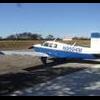
Intake boot (Servo intake duct) replacement
garytex replied to hicksa10's topic in Vintage Mooneys (pre-J models)
Jetdriven: Crap, thats stupid, and disappointing to hear. I really want a better boot, and wouldn't know where else to look. -

Intake boot (Servo intake duct) replacement
garytex replied to hicksa10's topic in Vintage Mooneys (pre-J models)
Ram air only open at altitude. Boot tear is open on the ground. I have noticed dirt and grit on the bottom of the cowl right next to the boot. Seems to me that when you open up the throttle on TO that it stirs up the dust right when the pressure delta between ambient and inside the induction system is highest. I think there is plenty of opportunity for dirt to get in. -

Intake boot (Servo intake duct) replacement
garytex replied to hicksa10's topic in Vintage Mooneys (pre-J models)
The other thing is can be collateral engine damage when the boot is torn. Unfiltered air comes in through the holes. I can't remember which of the engine manufacturer said it but the statement was "one teaspoonful of dirt trashes an engine". And a big enough piece of the boot getting sucked into the engine could cause stoppage although that does not seem to have been happening. -

Intake boot (Servo intake duct) replacement
garytex replied to hicksa10's topic in Vintage Mooneys (pre-J models)
No, this is a maintenance issue with real dollar consequences, The new ones are total POS. When I purchased my F three years ago it had a torn boot. Dugosh had one only in stock and it looked like a piece of crap and I was offended that it was $300. The damn thing had torn and had to be repaired my last annual. That's $100 a year for the damn thing, and I could've spent that money on whiskey, cigars and wild wild women instead. -

Intake boot (Servo intake duct) replacement
garytex replied to hicksa10's topic in Vintage Mooneys (pre-J models)
GeeBee built a prototype of one out of red Silacon and better material. It's built like a brick shit house. He builds lots of aftermarket parts and parts kits across the GA industry and is incredibly knowledgeable. Additionally he is well known within the bonanza community as a supplier of much much better flexible tubes used on the bonanzas. I talked to him for about an hour and he is almost OCD about the minutia of parts quality and gets really offended about price gouging, poor quality. Our kind of guy. He's not going to tool up without I think he said 50 orders. I talked to him a couple of months ago when my three-year-old boot had some tears. We ought to do a group buy. Maybe somebody with a little time could call some of the major suppliers and get some additional promises from folks on the site and make it happen. I think it's a very viable project the only reason I'm not doing it is because I'm at that stage in my life where I have to run faster and faster every day just to stay in the same place. To anyone who would consider helping us with this project just imagine yourself carried electronically on the shoulders of all of the appreciative Mooney owners who would be saved from what truly is a despicable part situation. Hip Hip hooray! Economically it makes sense to cough up the money for one now even if your boot is not torn now to buy one of these because the next time you go in for annual your boot IS going to be torn. And the new boot is going to last 2,3 maybe four times longer than the POS we have to use now. So the well made part will save $750 to 1,000 in a couple or three years. Additionally having one in your hot little hands is nice because these are typically in short supply and sometimes it's very difficult to find one. I'd rather spend my money on gas then a technologically outdated, poorly built part complete with monopolistic pricing and inappropriate profit margin. -
"Nice! Not sure where you are in South Texas, but you might want to let the Border Patrol know that you built a runway. That way if you arrive some afternoon you aren't greeted by a bunches of guys in green." I did. Called and said "Hey I am building a runway, not to smuggle drugs, but because I got a bunch of free material." They said "Thats nice. We've been on the ground on your ranch for years, and that new aerostat baloon over there that you can barely see from your place, we got that from the Navy, the Marines used it in Afganistan, it'll do facial recognition at 17 miles. We know you're not a drug smuggler, but thanks for calling"
-
Strip is not on the sectional, it is 240 miles south of Austin between Edinburg and Falfurrias on a family cattle and commercial exotic hunting ranch. I probably will not FAA it, don't want it on the sectional to call attention to it from the drug smugglers, they are nasty fellows. As an interesting side note, I called the Border Patrol and told them I was building a strip, not to smuggle drugs, but because I had free material. They chuckled a little, referred to the relatively new aerostat balloon they got from the Marines that was put up about 8 miles away and said "We've been watching your ranch on the ground for years. The balloon does facial recognition at 17 miles. We know you're not a drug smuggler, but thanks for calling".
-
I couldn't figure out how to post the promised pictures here, but I did learn how to make an album, and posted pictures of the building process for my runway there. I have used it a few times now ( finished in August) and really thrilled to have it even if it is a little short. The runway construction was only possible by using reclaimed oilfield pads, I got the spoil for free. 187 Semi loads of caliche, about 25 cu yards to the load. I wouldn't have used that much material if I had been buying it, would have cost at least $250 a load.
-
From the album: Building Runway
First landing. Runway is 3/10 of a mile long by odometer, about about 525 yards, 1575' and 18' wide with 3' shoulders. There were some 20' tall mesquite trees on the approach end that made it feel really short, so we knocked them out. There are power lines another 1/10th past the departure end, and our ranch hand's house. I have slowly been increasing the weight that I take off with, now up to about 480 lbs in the cabin and still well above the power lines. For the runway to really work for me I need to cary another 160 lbs, which is gross less about 120 lbs of burned and offloaded fuel. I think it will work in the winter, not so sure about those 100df summer days. Runway incursions include Turkeys and Javelinas. Another hazard revolves around the portable shooting benches and the trailer mounted target stand that may get left out on the runway. The rest of the guys on the ranch immediately saw the runway as a multi use facility and a 4/10 mi shooting range. And the kidos are already racing golf carts and buggies. Something for everyone :-) -
From the album: Building Runway
The trucks would dump the caliche out the bottom in windrows, Roel would flatten it out with the backhoe, Bralio kept the water truck going and directed the trucks, and I had rented a motor grader. In the evenings the Super from the reclamation job would come over and blade the runway for an hour or so to put the finishing touches. Roel was so goodon the backhoe that not many hours were needed on the (expensive) blade. The super was good on the blade, the runway finished smooth, with no hoop te doos, and nicely crowned. Everything was going good so I left for a couple of days to go try to make some money. They kept at it, adding material to low spots, and building it thicker. I had hoped for 8" of compacted material, wound up with 12 to 18 ". -
From the album: Building Runway
You can't build a road without making a mudpie. I rented this water truck for a week. The waste caliche had a lot of sand in it and I was afraid that without lots of water and compaction that my runway would not be solid. It has been really dry in south texas, and it was a challenge to keep it wet. We first wet the sandy sub grade so the first dump trucks would not get stuck (although we did stick a couple--backhoe pulled them out) Then we made the dump trucks run all the way to the end of the runway for each load, and kept the caliche wet during that process. I didn't need instruments to tell it was 100% compacted -
From the album: Building Runway
Road (and runway) building in south texas is done with Caliche. Caliche is soil that has had water from limestone aquifers percolate up through and evaporate in, leaving calcium impregnated grainy soil with a few soft "rocks" in it. A neighboring ranch had some abandoned oil drilling pads that were being reclaimed and revegetated. They were looking for a place to dispose of waste caliche. Right here, please, in this strip 18' wide. I got 187 truckloads. -
From the album: Building Runway
After clearing the ROW, the sub grade (native ground which is pleistocene deposited fine sand very like beach sand) was leveled and crowned, mostly by backhoe. A really lucky break, Roel , a temporary ranch hand turned out to be a wizard on a backhoe, and seemed to enjoy the challenges of road building. -
From the album: Building Runway
You can just see the Backhoe starting to clear the right of way for my runway at the ranch -
Geez guys you're scaring me. I've been perfectly happy to land on the 1600 feet of caliche about 18 feet wide that I have at the ranch. Another 400 feet to the house with powerlines afteor the end of the runway. Summertime temperatures almost always exceed 100. And occasionally Javelinas dart out across the runway. I'm still thrilled to land there because it saves me four hours driving. I'll post some pictures
-

M20F Speed Checks... Comparison Please?
garytex replied to Ragsf15e's topic in Vintage Mooneys (pre-J models)
100 Rop mine has shown 150 Kts or very slightly above 3 or 4 times on the 4 way GPS ground speed average at 7500 on cool (for Texas) days. I also think my airspeed indicator over reports maybe 6 or 8 kts. Plane has full boat of SWTA mods. Runs 5 - 8 kt slower 30 LOP around 8 GPH -

Interesting finds during oil change.
garytex replied to Guitarmaster's topic in Vintage Mooneys (pre-J models)
Was this on #2? That is the most common pipe to vibrate, and loosen the nuts. As a secondary concern, said vibration will wear out the flange at the top of the pipe and generate an exhaust leak. To check, look at your MP at idle. Is it as low as it has been? If it is high, look for intake leak. -

Whats going on with values of the older fleet?
garytex replied to Immelman's topic in Vintage Mooneys (pre-J models)
KS is the exception that proves the rule -

Whats going on with values of the older fleet?
garytex replied to Immelman's topic in Vintage Mooneys (pre-J models)
Every so often plane values get stupid low, then stupid high. In 1986 you could buy a Cessne 185 for $12,000. We've probably got at least a couple years of good economy ahead, and prices will rebound some. Operative word: some. We will still accrue value for being at the high end of the utility spectrum. There is still nothing that turns gas into less noise and more speed than a Mooney. That may become more important in the future. There is always an irrational or intangible side to value however, and I think Mooneys are perceived now to be slightly out on the "kwerky" side. (And I wonder if we aren't somewhat responsible for presenting that face) Another intangible that I think takes some off the top of the value of the metal fleet, is that our airplanes no longer look like the latest and greatest. So the same guy that boosts his self image and self esteem buying more and a newer car than optimal, is out of the market for our airplanes. He buys fiberglass. And drives a BMW. As proof of this observation, have you ever noticed what a nice bunch of folks you run into driving Mooneys? And how many stories of driving rudeness start "Well, this prick in a BMW…" :-)



